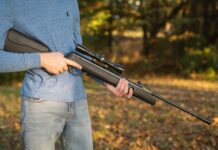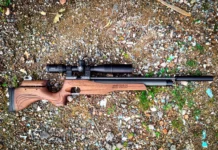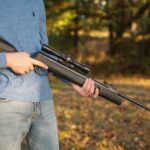Indeed, wildlife in Alaska is larger and more plentiful. But the size of the Moose is out of this world.
Actually, It’s a medieval creature. Most people on earth are unfamiliar with Moose, yet they are an everyday occurrence for some.
More than 500 traffic accidents involving Moose occur annually in northern New England.
The physical damages endured by car passengers are significantly more catastrophic and likely to end in fatalities due to the animal’s height and weight.
When a car slams into a moose, the animal’s long legs are crushed, causing the animal’s body to smash against the windshield and roof.
This significant problem has been noted in Canada and Scandinavia, affecting humans and animals.
You may wonder how high and huge an average moose is, which makes it so deadly in traffic accidents.
But if you are mindful of its height and bulk, you will almost certainly avoid a face-to-face encounter when driving north or camping in the woods.
These wild animals evolve and develop throughout their lives. The body mass does not accumulate until males are nine years old and females are four years old.
Let us read along and dive straight into the moose size comparison!
Table of Contents
Introducing Moose and its subspecies
The term moose is prevalent in North America and was inspired by the Algonquian word “moosh,” which means “stripper and eater of bark” in the Innu language of Quebec, Canada.
These species of deer are the largest among deer species. There are 8 subspecies of moose, with Alces alces gigas, American moose being the biggest.
The classification includes European moose and Siberian, East Siberian, and West Siberian moose. Other species of these wild animals are often classified as North American or Canadian moose.
The male and female moose are referred to as bull and cow moose, respectively. The moose cows are comparatively smaller than bulls.
The moose prefer aquatic vegetation and wetlands for their food source and dwelling.
These excellent swimmers were almost extinct in Sweden back in the 19th century. But after expanding throughout Europe, North America, and Canada in the 20th century, they restored their population.
Size And Appearance of Moose
As per the Alaska Department of Fish and Game, Moose is the largest representative of the deer family. They are also North America’s tallest mammals.
Their height varies from 5 to 6.5 feet from hoof to shoulder. Males measure 794 to 1,323 pounds, while females weigh 595 to 882 pounds.
However, there is more divergence in the spectra than these binary numbers; a healthy Moose may range from 300 pounds to 1800 pounds!
Moose have tiny tails, a hump on their shoulders, and huge ears that can twist, allowing them to hear in stereophonic mode.
Their hair is typically dark or black, offering valuable insulation against the cold. Male Moose, known as bulls, have enormous antlers.
These can reach a width of 6 feet (1.8 m) from tip to tip. Antlers are solely used to fight for a mate and are shed each winter following the mating season.
Moose Size Comparison
Although all Moose are huge, there are geographical variances in size. Varying species sizes are determined by their habitat and genetic compositions.
Moose is, believe it or not, a pretty enormous deer, and North America has four species of these giants.
Moose species size comparison
The moose species can have variable size differences based on their genetic structure interline.
1. Alaskan Moose
This giant Moose is the biggest of the four moose subspecies and inhabit Alaska. Male Alaskan Moose may grow 6 feet 9 inches tall at the shoulder.
To put that in context, most NBA basketball players could effortlessly glide beneath a standing moose.
Alaska-Yukon Moose may weigh up to 1400 pounds. Their antlers are also a little under 6 feet wide.
2. Northwestern Moose
These moose are spotted around the North of the United States, such as North Dakota and central Canada. They reach a height of 6 feet 4 inches and weigh up to 1590 pounds.
3. Shiras Moose
The residential moose of the United States from Utah to Idaho can also be spotted in British Columbia. They are the tiniest moose subspecies.
Shiras stand 36-55 inches tall from hoof to shoulder. They may also weigh up to 1200 lbs.
4. Eastern Moose
Eastern Canada and the northeastern United States are home to Maine’s own Eastern Moose.
It is the third most populous moose subspecies, after Alaskan and Western Moose. These moose can be spotted in Seney National Wildlife Park and Tahquamenon Falls State park in the upper peninsula region.
They may reach a height of 6 feet 6 inches at the shoulder. Their weight may exceed 1400 lbs.
Moose Size Comparison to a Human
Adult bulls are substantially taller than even the world’s tallest humans!
A moose may stand up to 6.5 feet tall at the shoulder, while an adult male human stands at 5 foot 7.5 inches on average.
At the shoulder, the Alaskan Moose stands more than 7 feet higher. When the head and antlers are added, the overall height exceeds 10 feet. Even the tallest person cannot face a Moose with their head lifted.
Moose Size Comparison to a Horse
Let us contrast a Moose with a horse!
A Moose’s typical shoulder height ranges from 5 to 6.5 feet, while a horse’s average shoulder height is from 2.5 to 5.8 feet.
A full-grown Moose may weigh up to 1,800 pounds, whereas a horse can weigh between 120 and 2,200 pounds.
A Moose is thus larger than a horse in terms of size. In terms of mass, a horse is heavier than a moose.
Moose Size Comparison to a Truck
When matched to a Nissan Titan, the Moose’s and vehicle’s heights are now roughly equal.
Because most Titans are roughly 6.5 feet tall, the top of the truck would likely be slightly higher than the Moose’s shoulders.
If the Moose is huge, it should be taller than a truck!
Moose vs. Elk: Confusion solved!
The most classic mistake shooters make in Colorado is mixing Moose with elk. Moose have a lot darker fur than elk and lack the lighter abdomen of elk.
A moose’s snout is also considerably bigger and more spherical or round than an elk’s sharp nose.
The antlers of Moose and elk develop in quite distinct ways. A moose’s antlers expand to the side of its head, but an elk’s antlers grow rearward over its body.
Elk antlers have a primary shaft with long points sprouting off it, but moose antlers develop in a shovel-like form with many spikes sprouting off the thick, shovel-shaped part.
Finally, moose develop a fluttering strip of skin beneath their necks known as a dewlap or bell. This characteristic is specific to Moose and not found in elk.
Fun Facts about Moose
- Moose can move each ear and eye independently.
- During the rut, bull moose emits various noises, including a loud bellow, croaks, and barking when collecting their young female moose utter protracted quavering groans that conclude in cough-like moo and a grunt.
- Moose stomachs can hold up to 100 pounds of food.
- Every wintertime, moose lose their paddles and develop new ones the following spring. Antler development is determined by testosterone levels and the duration of the day. Antlers can also be used to determine age.
- “Harem herd” is the term given for a herd of female moose chosen by dominant male moose during mating season in Alaska. The remaining males will compete with the herd’s alpha for the privilege of mating with the females.
- The hollow structure of moose hair aids in protecting the animal from the cold.
- The front legs of a moose are longer than the rear legs. This makes it easier for the Moose to jump over obstacles along its route.
- The famous Canadian city Moose Jaw is often believed to be named after moose, but that is not the case. The city is named after the Cree language, which means A warm place by the river.
Frequently Asked Questions
Yes, Moose are gigantic, and yes, they do kill humans on occasion. Overall, moose are enigmatic animals that balance and beautify the world’s ecology.
So do you want to go to the Northern part of the world to witness this marvelous creation?
If you want to know about animals’ expertise in standing sleep or the giant Chordata that can sore in the sky, go through the respective hyperlink.
(Last Updated on August 28, 2022 by Sadrish Dabadi)











































